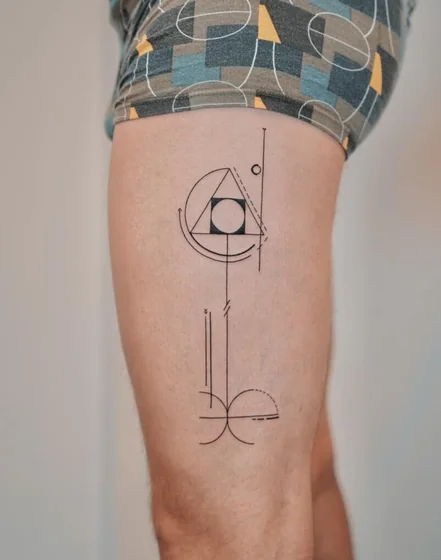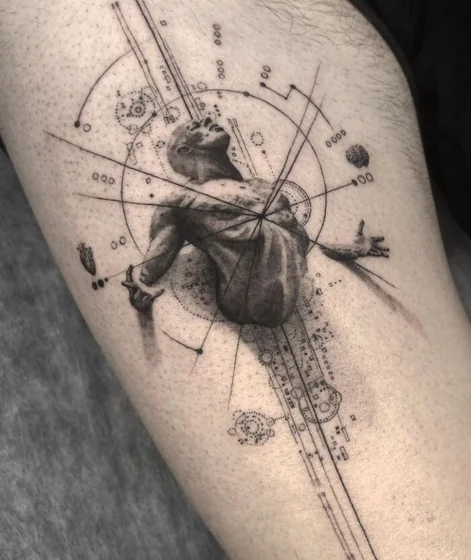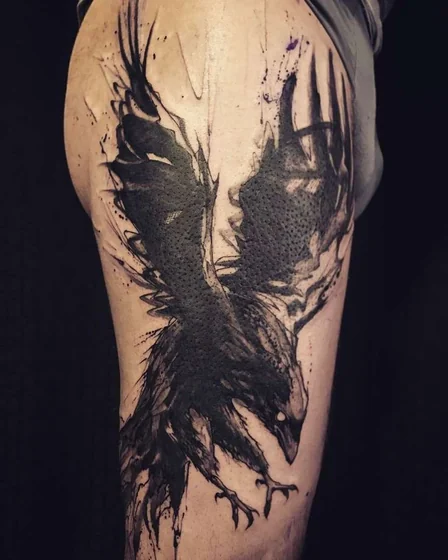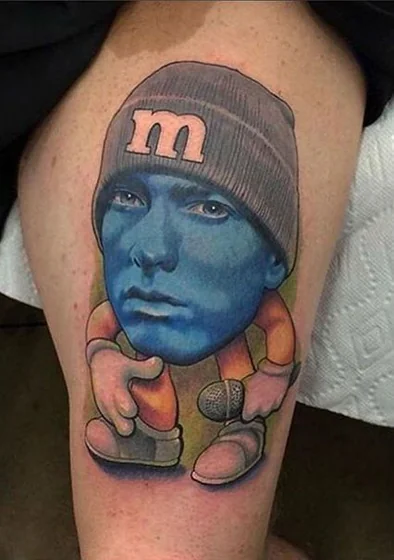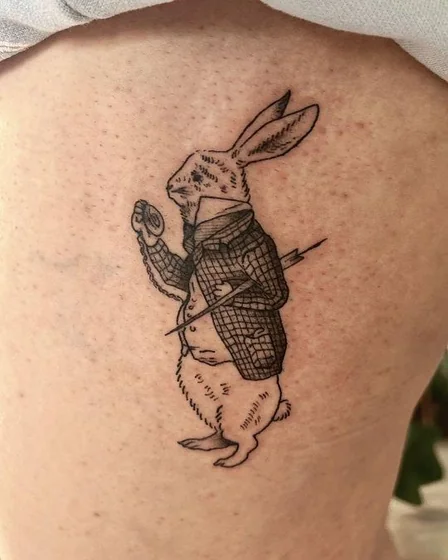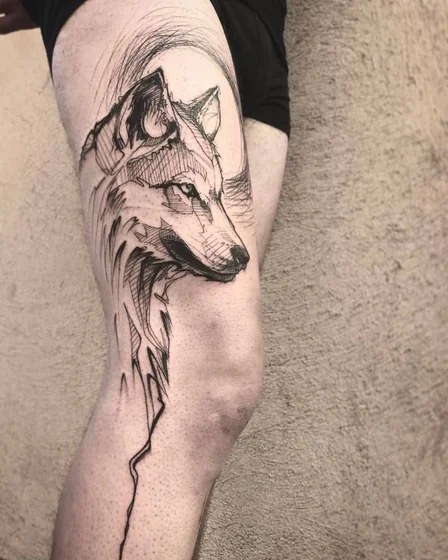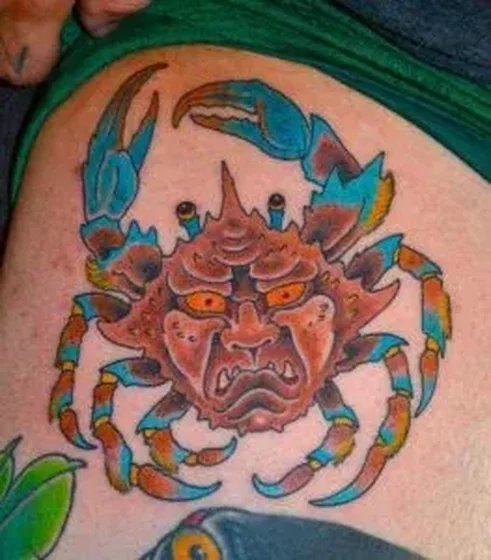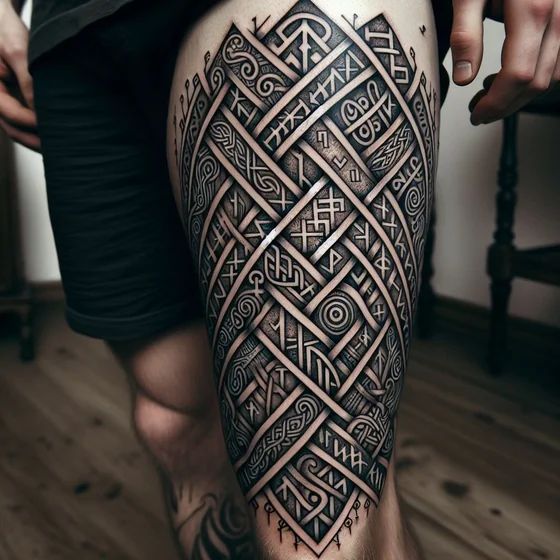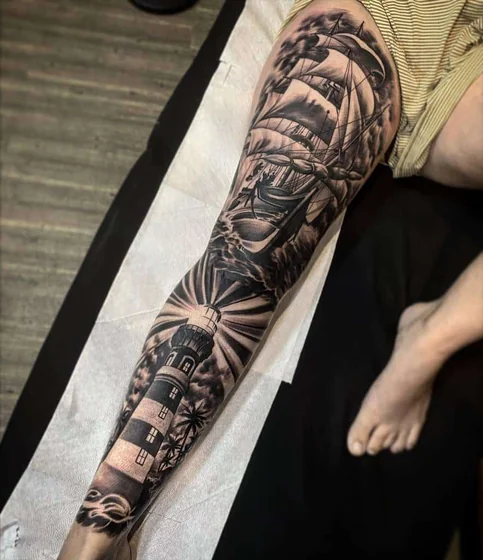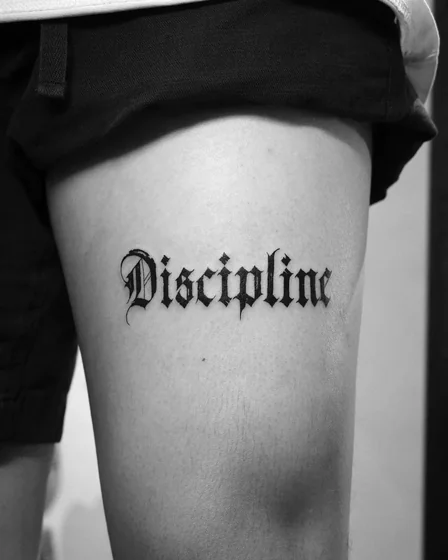Filters
Tattoo Ideas
Start Your Tattoo Design Journey
0Tattoos Designed This Week On Tatspark
Now in Beta — share your feedback and shape what's next.
Why Men Are Choosing Thigh Placement Increasingly
Leg work gives you something arms can't: complete control over professional visibility. You can wear business attire all week with zero ink showing, then reveal impressive artwork at the gym, beach, or casual settings. This dual-identity capability appeals to men in corporate environments, military service, or client-facing roles where perception management matters. Your art exists on your terms, not your employer's comfort level.
The quadricep region provides natural athletic framing. When you've built leg muscle through squats and training, ink follows those contours, creating dynamic visual effects as you move. A prowling panther wrapping your outer quad gains predatory menace when muscles flex beneath it. Geometric patterns aligned with muscle striations appear architecturally intentional rather than randomly placed. This synergy between physiology and artistry separates good leg pieces from great ones.
Design Themes That Resonate With Male Clients
Warrior and mythology motifs dominate requests—Spartan helmets, Norse symbols, samurai imagery. These concepts carry obvious masculine coding, but execution determines whether they read as powerful or cliché. The difference? Personalization and artistic interpretation. A generic Spartan helmet copied from Pinterest looks forgettable. That same concept reimagined with your family crest integrated into the plume, rendered in dramatic black and gray realism, becomes distinctive.
Apex predator wildlife translates well to leg canvas: wolves mid-howl, eagles in attack position, sharks cutting through waves, or big cats stalking prey. The key is capturing genuine animal behavior and anatomy rather than stylized cartoon versions. Bring reference photos to your consultation showing the specific posture and expression you want—a bear rearing up conveys different energy than one in stalking position.
Mechanical and biomechanical designs suit guys with engineering minds or industrial career backgrounds. Gears, pistons, robotic components integrated with muscle structure create that cyborg aesthetic. These work particularly well on outer quad placements where the design can wrap slightly, giving three-dimensional illusion. Just ensure your artist specializes in this style—biomechanical work requires understanding of both mechanical function and anatomical structure to look convincing.
Size and Placement: Maximizing Visual Impact
Masculine Design Approaches by Thigh Zone
- Outer Quad Dominance: Bold 10-14 inch vertical pieces | Showcases confidence and commitment | Pairs well with gym shorts aesthetic | Lower pain makes longer sessions feasible
- Front Thigh Statement: Centered 8-12 inch designs with symmetrical balance | Strong focal point when standing | Moderate discomfort allows detailed work | Perfect for symbolic/memorial pieces
- Side Hip Connection: Wraparound concepts flowing into hip/oblique region | Creates cohesive body suit foundation | Higher pain but dramatic results | Best for collectors building connected themes
- Inner Thigh Privacy: Reserved for intimate partner-view designs or completing leg sleeves | Highest pain threshold needed | Less common for standalone masculine work | Consider carefully before committing
Most men benefit from going larger than initially planned. What seems "big enough" in a line drawing often appears smaller once on your body, especially on muscular legs where mass absorbs visual impact. Add 20-30% to your first size instinct—you won't regret the extra presence, but you might regret going too small.
Feminine approaches using different aesthetic principles—see for women.
Session Logistics and Masculine Pain Tolerance
Here's the reality: leg work hurts less than ribs, feet, or spine, but more than arms or shoulders. Outer quad sessions rate around 5/10 for most guys—uncomfortable but totally manageable for 4-5 hours if you prep properly. Front thigh jumps to 6-7/10 when the needle approaches the inner edge near the groin, where nerve density increases.
Don't skip breakfast before long sessions. Low blood sugar amplifies pain perception and increases fainting risk. Bring water and protein-based snacks for breaks. Some guys prefer music or podcasts to zone out; others find conversation with the artist helps. Test different approaches during your first hour to discover what works for your nervous system.
Multiple sessions might be necessary for ambitious pieces. A full-thigh sleeve covering outer, front, and side sections typically requires 15-25 hours of work. Breaking this into 4-5 sessions (each 4-5 hours) prevents both artist fatigue and your body's stress response from compromising quality. Rushing produces inferior results. Budget both money and time appropriately for work you'll wear for life.
